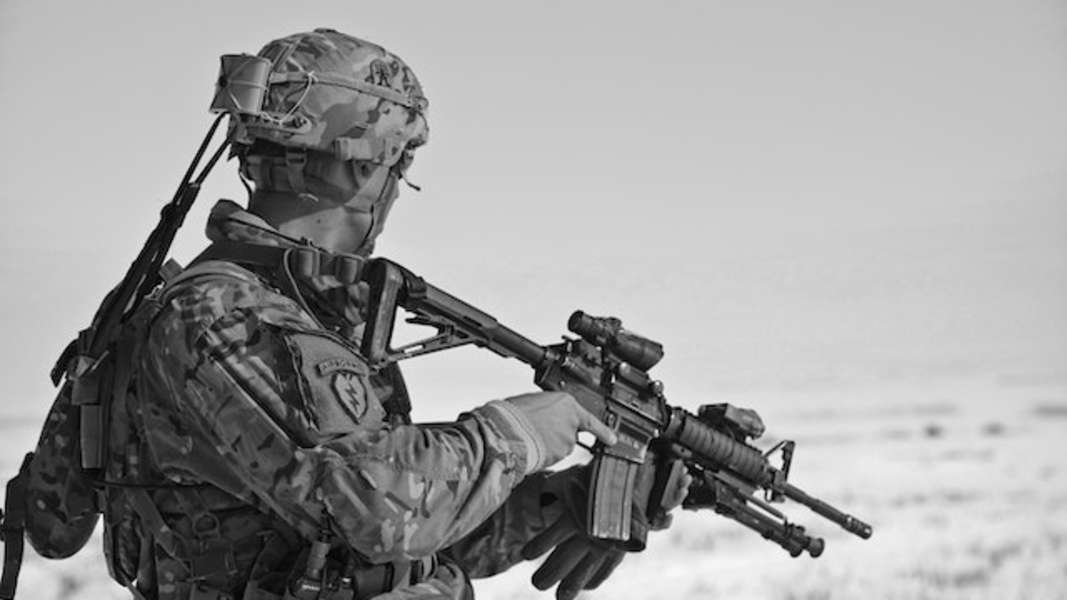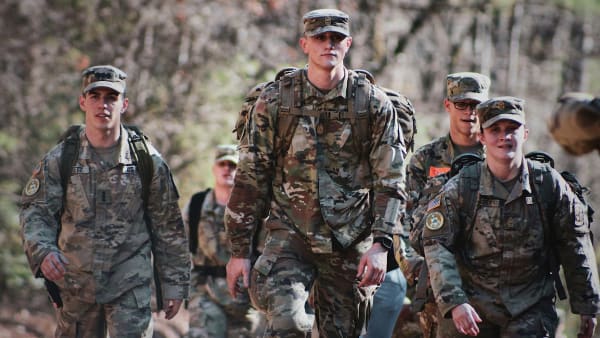What Are The 11 Military General Orders?
Developed in 1898, the 11 military general orders are a set of guidelines used by military personnel in all branches of the US military.
These orders are designed to ensure the safety of personnel when on sentry duty, i.e., when they are stationed to guard a specific post.
The military general orders also outline the expectations of military personnel when on sentry duty in terms of their behavior and actions that should be taken when in doubt.
The 11 general military orders are:
1. To take charge of this post and all government property in view
Helps outline the expectations of what is expected of those on designated sentry duty. For example, when guarding a particular area, should they need to, military personnel have the authority to question anyone who passes the area they are stationed at.
2. To walk my post in a military manner
Emphasizes the importance of discipline and attention to detail in performing one's duties. This order reminds them to remain vigilant and focused at all times. In a real-life scenario, this command could be applied to someone patrolling a building or conducting a foot patrol in a high-crime area.
3. To report all violations of orders, I am instructed to enforce
Ensures discipline and adherence to procedures ensuring safety and integrity for all military personnel. In a real-life scenario, a commanding officer may issue an order for troops to hold their positions during a battle. If soldiers disobey this order and advance, they risk disrupting the unit's strategy and putting themselves and their teammates in danger. Reporting such violations helps maintain order and safety in all military situations
4. To repeat all calls from posts more distant from the guard house to my own.
Ensures effective communication and response within a military unit. For example, during night patrol, soldiers must communicate critical information across a large area, ensuring that all members are aware of potential threats so they can act accordingly.
5. To quit my post when properly relieved.
This vital directive maintains order and discipline, keeping troops and civilians safe in any given situation.
It means that a service member must remain at their post until properly relieved by a qualified replacement. For instance, in combat, a soldier must hold their position until a designated individual arrives to take over, preventing any gaps in defense.
6. To receive, obey and pass on to the sentry who relieves me all orders from the commanding officer, field officer of the day, officer of the day, and officers and petty officers of the watch.
Ensures efficient communication and execution of orders within a military unit. For example, in a critical mission where timely and accurate dissemination of orders can mean the difference between success and failure, it also reinforces the importance of discipline and hierarchy in the military structure, ensuring the integrity of military orders.
7. To talk to no one except in the line of duty.
Soldiers are not allowed to share sensitive information or engage in conversations that could compromise a mission. For example, soldiers must strictly adhere to this order during a classified operation to prevent the enemy from gaining an advantage. Or, when on sentry duty they must not engage in discussion unless directly related to carrying out their task.
8. To give the alarm in case of fire or disorder.
Can mean the difference between life and death in emergencies. For example, quickly alerting troops to potential dangers, allowing them to take appropriate action. Or giving an order for civilians to take shelter if their location is on fire or under siege.
9. To call the petty officer of the watch in case of not covered by instructions.
Ensures proper protocol is followed when clear guidelines are not established. The order could be applied when an unexpected security threat arises, and those on sentry are unclear on how to proceed.
10. To salute all officers and all colors and all standards not cased.
Helps promote respect and discipline within the military ranks. It ensures that every officer, regardless of rank, is acknowledged and greeted appropriately. For example, during a military parade, where officers and colors are on display, saluting them shows the highest level of honor and respect for their service.
11. To be especially watchful at night and during the time for challenging, to challenge all persons on or near my post, and to allow no one to pass without proper authority.
It is essential to prevent unauthorized access to sensitive areas, protect valuable assets, and prevent potential threats.
For example, soldiers on guard duty must challenge anyone approaching their post and verify their identity and authorization before allowing them to pass.
Purpose of Military General Orders
All military personnel must know the orders, ensuring they follow them at all times.
There are three main purposes to military general orders, enabling military personnel to work to keep themselves and others safe.
Maintaining Discipline and Order
Military orders provide guidelines on how individuals should behave in any situation they may come across. This level of discipline in their work maintains the integrity of their role and provides a structure to what they do. In following these orders, military personnel can safeguard their own lives and the lives of others.
Ensuring Security and Safety
The 11 orders ensure that those on sentry duty always remain vigilant. The orders ensure that when an individual isn't clear on what to do in a particular situation, there is a process to follow to gain clarity. In remembering and following these orders, individuals can protect themselves, others in their team, and civilians, ensuring their safety at all times.
Instilling a Sense of Responsibility and Accountability
Those on sentry duty have a responsibility to themselves and others. The 11 military orders articulate these in a way that individuals can remember. Understanding this role ensures they remain accountable and vigilant at all times and in all situations.
Tips For Learning the 11 Military General Orders
All military personnel must know and be able to recite the 11 military general orders. Here are a few tips to help in remembering these orders.
Break it down into smaller chunks: Instead of memorizing all 11 general orders at once, try breaking them down into smaller groups and focusing on learning one group at a time. You could focus on remembering the first four general orders, then move on to the next four, and finally, the last three.
Use mnemonics: Try creating a phrase or sentence using the first letter of each word in each general order.
Repeat them out loud: Saying the general orders out loud repeatedly can help you commit them to memory. Make sure to recite them in different orders, and challenge yourself to say them without looking at a cheat sheet.
Write them down: Writing the general orders down multiple times can help reinforce your memory of them. Use different colors or fonts to make them more visually appealing.
Make it a game: Challenging yourself or getting a family member or friend to quiz you on the number of general orders you can remember in a set amount of time. You could also create flashcards or a quiz to test your knowledge.






